Sailboat Technology
Summary: How modern technology has invaded an ancient endeavor.
Regular readers know I'm fascinated with the history of technology. According to Wikipedia (http://en.wikipedia.org/wiki/Homo_sapiens), Homo sapiens emerged 500,000 years ago, and for half a million years pretty much nothing changed. Agriculture showed up 2% of those years ago; moveable type 0.1%, and electronics has been around for just 0.02% of the span of human existence. My late grandmother, who grew up in Manhattan, told me she knew someone "on the other side of the island" who had a phone. The first electronic computers appeared when my parents were in college. In engineering school none of us had calculators; we all used slide rules. But my kids were required to have a computer when they went off to school, and they have never lived in a household without at least several around. It's rather wondrous how much things have changed.
But some things remain the same. Sailboats existed at least 7000 years ago (http://en.wikipedia.org/wiki/Sailing) and today are still in use both recreationally and commercially. Here in Maryland skipjacks still dredge (the watermen pronounce it "drudge") the Chesapeake Bay for oysters, and are only allowed to use an engine two days per week. In fact, engines aren't allowed aboard a skipjack at all; they are in a dingy (called a "yawl boat") which, on those two days, pushes the bigger boat. There is also still some shipping under sail, albeit somewhat whimsically, in the Caribbean, as well as in other locations around the world.
Recreational sailboats are an odd mix of the latest and ancient technologies. I thought readers might be interested in the use of electronics on such an ancient form of transportation, so here's a tech tour of Voyager, my current hole in the water into which I throw money.
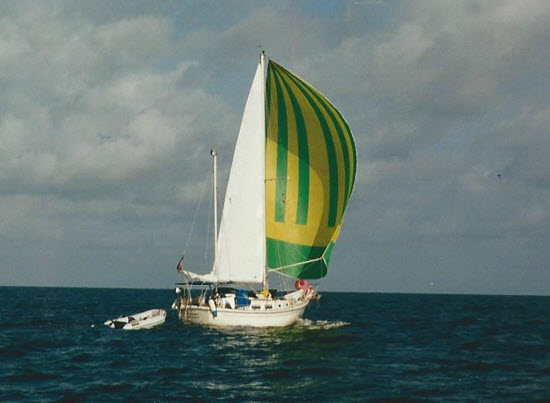
Voyager is a 32' fiberglass ketch, which means she has two masts. Built in 1977 she is considered small for a cruising sailboat, but as I get older I appreciate the small sails, anchors and other gear that seems to get heavier each year. As boats go she isn't really loaded with tech; for instance, we don't have a chart plotter, now considered essential equipment. I've been with friends who turn theirs on before leaving the slip and power along with their eyes glued to the screen, instead of watching the water, oncoming traffic, the birds, and the beautiful Bay. On Voyager we use paper charts. They are almost failure-proof, and there's something special about leaning over the chart table, plotting your position, and thinking about other destinations. A chart becomes a worn friend. Coffee stains accumulate, blood sometimes, as well as myriad pencil lines showing today's position as well as courses sailed in the past.
The technology of the sails and rigging has changed a lot in my sailing career. We used to use canvas sails and galvanized wire rigging. Masts (and the boat) were wood. Today the rigging is stainless steel, the sails dacron or nylon, the boat fiberglass and the masts aluminum. Deep-pocketed racers use exotics: carbon fiber masts, sails of Kevlar and other materials. We were looking at the rigging of a modern ocean racer and I had no idea what it was made of - some engineered material no doubt designed with little margin, as weight is everything in the go-fast world.
Electronics, of course, is where most of the change has happened. In the 70s my 1930s-era wood boat had a ham radio, an AM/FM receiver and a cassette deck. That was it. No marine radio. No depth sounder. Though it was possible to buy those, the price was not practical for those on a budget. A decade later, I had a 35 footer (also wood) and navigation was by still by sextant. I installed Loran C, but once more than two or three hundred miles from land it couldn't get a signal. In 1991 a friend and I sailed her to England. GPS was available, but was fantastically expensive. We borrowed a hand-held unit from friends in the government. It burned through AAs so fast that it had to be off most of the time. Embedded systems were not as powerful then; it took 20 minutes to acquire and compute our position. If the sky was clear I'd race it and get a sextant position plotted before the GPS was finished.
The next year I entered the single-handed transatlantic race from England to Rhode Island. GPS prices had dropped to about $1000 and all of the racers bought units. That was too pricey for me, so I navigated with the sextant (though sank after 29 days at sea). One of the racers, a slight French woman, developed a minor problem with her engine which could have been fixed in minutes, but she didn't know anything about diesel mechanics. We were allowed to use the engine only to charge the batteries. She also didn't know how to navigate so, sans engine, elected to use her remaining charge to run the GPS, and hand-steered the final 1500 miles. That was quite a feat of which she was justifiably proud.
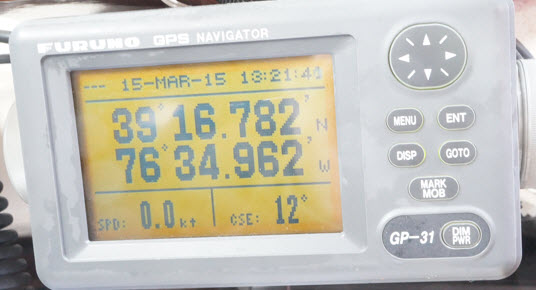
Today Voyager has a GPS, of course, plus a spare hand-held unit. The main unit draws just 80 mA and is on all of the time. It cost a few hundred dollars and has been in service for 16 years.
And yet.
An old maxim is to never trust a single navigational aid. I generally do at least some sextant navigation at sea, to keep in practice and as a check on the electronics. On one trip to Bermuda we left the GPS off just for fun. Five miles out with the island clearly in sight we turned it back on. The position it gave was off by 20 miles. Turns out the Navy was conducting some experiment that confused navigators island-wide.
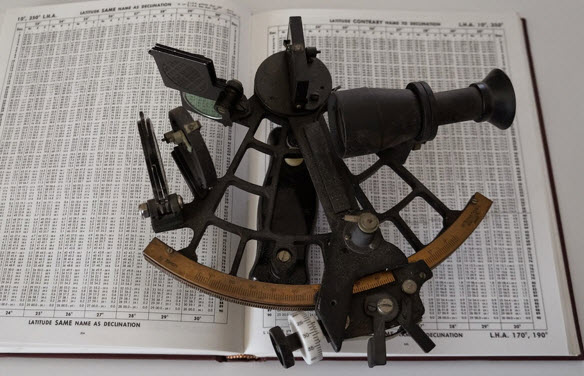
With a sextant one measures the angle between the horizon and a star, planet, moon or sun. You'll only get that particular angle if you are on a circle a certain distance from where that body is directly overhead on Earth. Walk closer to the body, and the angle increases. Walk away, it decreases. Observe two objects, or the same object at different times (adding in corrections for the boat's motion) and you are at one of the intersections of the two circles. Accuracy is important; an error of one minute of arc throws your position off by a mile. Since the observation is taken from a small boat in sometimes heavy seas that accuracy can be hard to obtain.
The sextant angle has to be reduced via some simple math and then plotted. The sailor typically does this several times a day, which would make a deep sea chart, which spans thousands of miles, obliterated with plots, so we draw on "universal plotting sheets," and transfer the noon position once per day to the big chart. Calculators are sold that will do all of this, but somehow using a sextant plus a billion transistors seems an odd mix of technologies, so I prefer to work them out by hand.
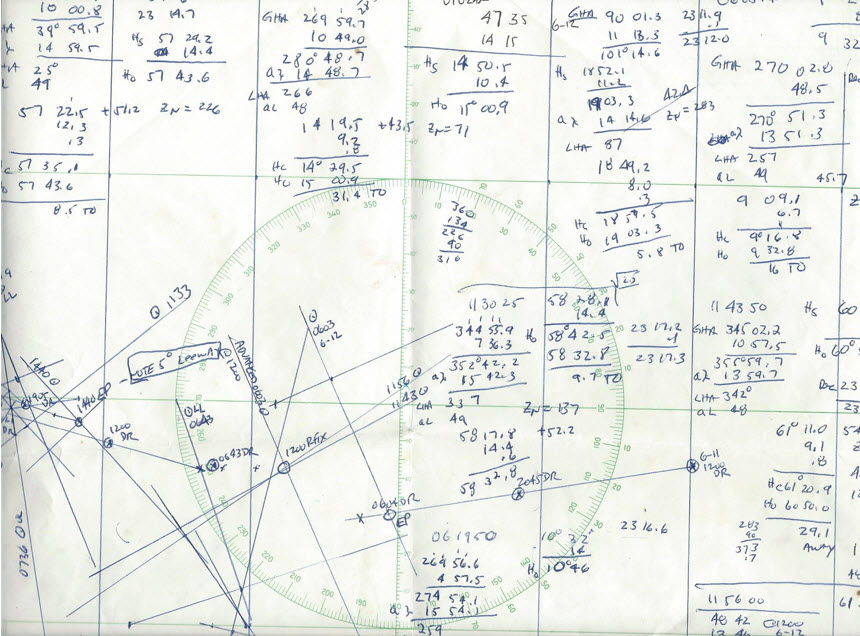
Just about everyone has a marine VHF radio today. They've gotten cheap, waterproof, and are filled with functionality. Ours shows barometric readings for no discernable reason. The boat's main barometer is much more accurate.
We also have a waterproof hand-held VHF which is handy when going through bridges, for example on the Intra-Coastal Waterway. While steering it's easy to use the hand-held to request a bridge opening.
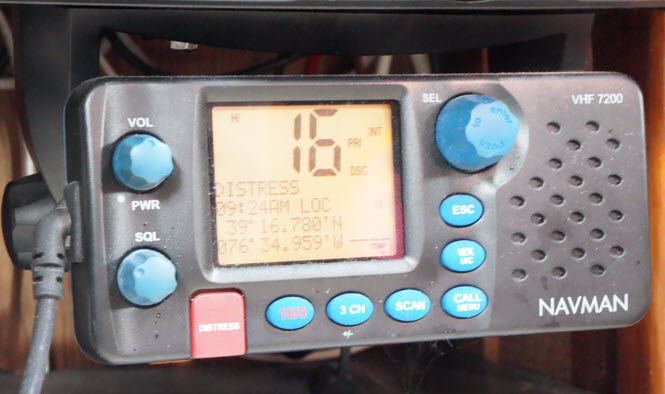
Ham radio was one of the gateway drugs for me into electronics. Today, the only time I'm on the air is when sailing offshore. We use a ham SSB radio to get phone patches home - hams ashore connect us into the phone system. There are also various weather and informational networks on the air. On long trips we often sail in company with a friend's boat, but his is faster and he'll pull hundreds of miles ahead. Every morning and evening we chat and exchange positions for safety and community. On one weeklong trip we each had a son aboard and they played Battleship in the evenings over the SSB.
The SSB can output up to 100 watts into the antenna. Since it tunes from 500 KHz to 30 MHz getting an impedance match is tough. We have a manual tuner with SWR meter to match the radio to the antenna, but this was a poor purchase. I'm the only one in the family who understands it so no one else can tune the radio. One of these days that will be replaced with an automatic tuner.
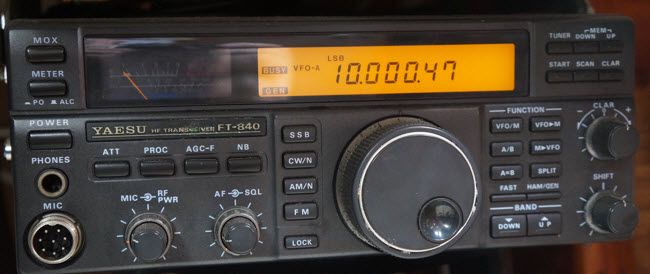
We do have RADAR but don't use it a lot. The set takes 4 amps. Were we to run it all the time that's 100 amp-hours/day which is just about our entire energy budget. The fridge needs 50 Ahr, and I am more interested in cold beer than RADAR. It's on when a situation demands it, like a difficult landfall at night or when working in fog.
The RADAR uses network data to show the latitude and longitude of any echo selected by a cursor. That's useful for navigation, and for hailing ships on the VHF. Instead of calling "ship whose lights I see," we can call "ship at xxx lat and yyy lon."
They usually don't answer.
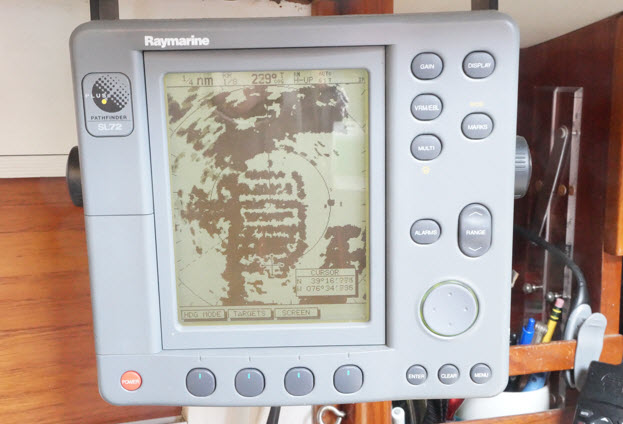
One of the best innovations in decades for vessels plying the seas is the Automatic Identification System (AIS). All vessels over 300 gross tons are required to have an AIS transmitter, which broadcasts a lot of information a few times a minute (depending on speed). Position, speed, course, vessel name, that unique ID number, and a lot of other info squirts out over a reserved VHF frequency. We have an AIS receiver that has a RADAR-like display. It, too, listens to the GPS and shows us at the center of the screen. All targets within a selectable range are shown. You can set a guard zone; if a vessel comes within the zone an alarm goes off.
We generally sail very short-handed, just my wife and myself. When you're at sea, sailing 24/7 for weeks, watch keeping can be a problem. We do sleep at night; I get up every hour or so and look around, but the AIS is always on guard, ready to wake us should a ship get near. Ships usually answer a call when we ring their alarm using their unique ID that the AIS displays. Sometimes a bored second officer will chat for a while as we pass, but usually the calls are very businesslike as we discuss collision avoidance.
I've thought about buying an AIS transmitter and programming it to identify us as a 1000 foot-long aircraft carrier. That would certainly keep others away.
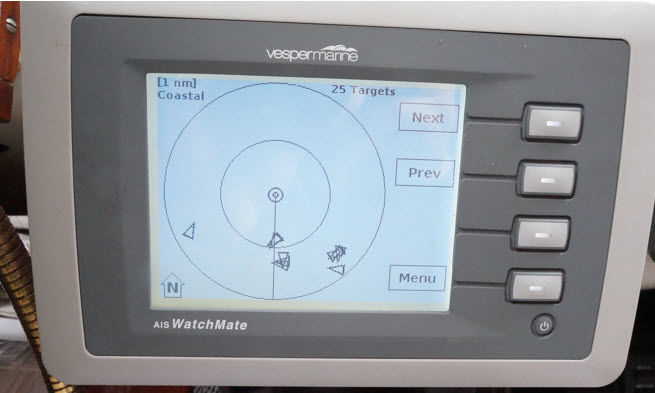
There's one critical piece of gear I hope to never use. It's the EPIRB, the Emergency Position Indicating Radio Beacon. Waterproof, it floats, and when activated sends out a HELP message to orbiting spacecraft on 406 MHz. It lives in our ditch kit. If the boat were sinking we'd deploy the liferaft, a sort of Swiss-army boat that inflates automatically, and grab the ditch kit. Each EPIRB has a unique number so the Coast Guard knows who is signaling. If they pick up a broadcast they call contacts we've registered to ensure that it wasn't an accidental message. Otherwise they'll contact ships in the area to arrange for a rescue. In the '92 singlehanded transatlantic race I did activate an EPIRB; though 500 miles from land, within four hours a Canadian Navy P3 Orion was overhead and calling on the VHF.
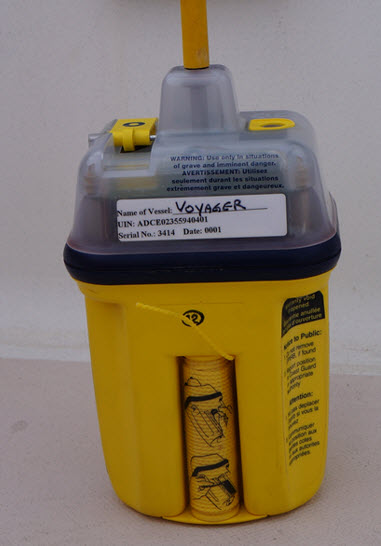
There's more, of course. Electronics pervades our lives. A depth sounder, knotmeter, anemometer, wind direction indicator and more grace little Voyager. All of this stuff is considered essential today, yet just a couple of decades ago most was either unavailable at any price, or was too expensive for most sailors. No doubt in a decade or two this gear will be obsolete and some new marvels will be considered essential.
(There's more on Voyager and other sailing debacles here: www.ganssle.com/jack).
Published February 25, 2015

